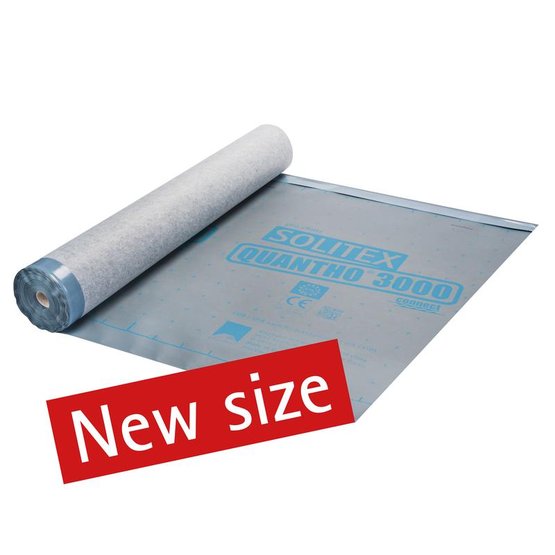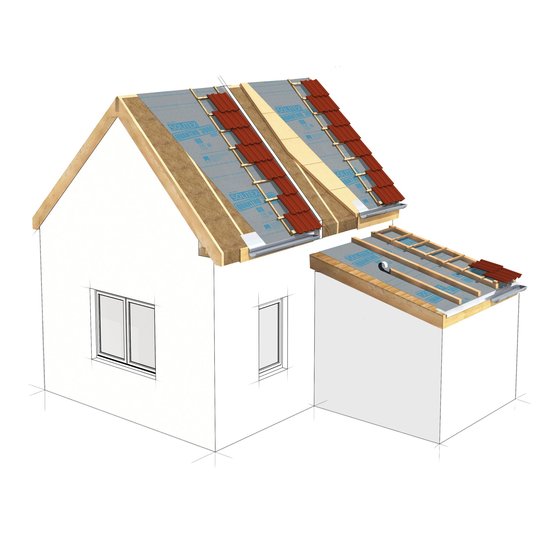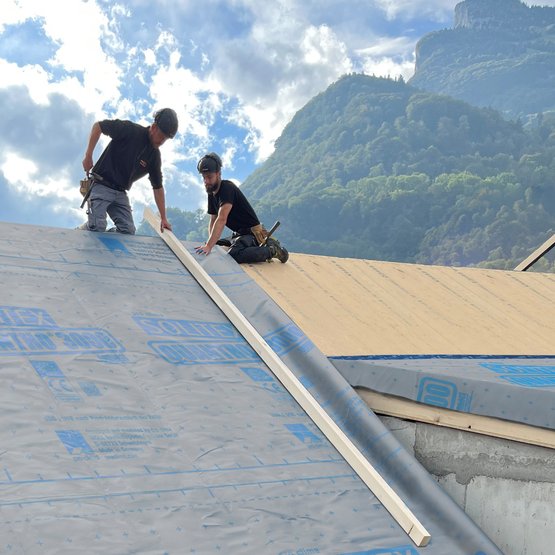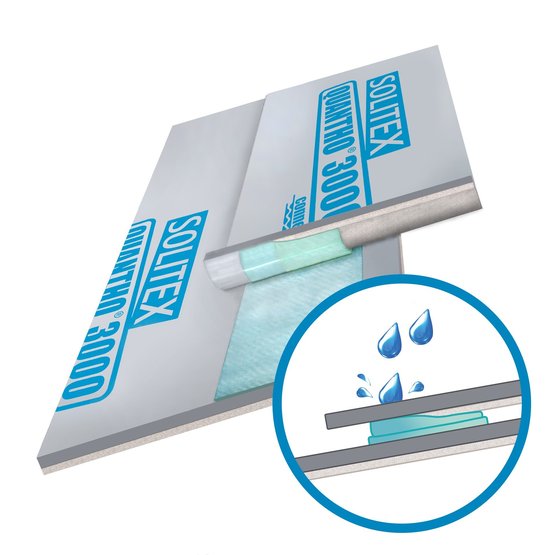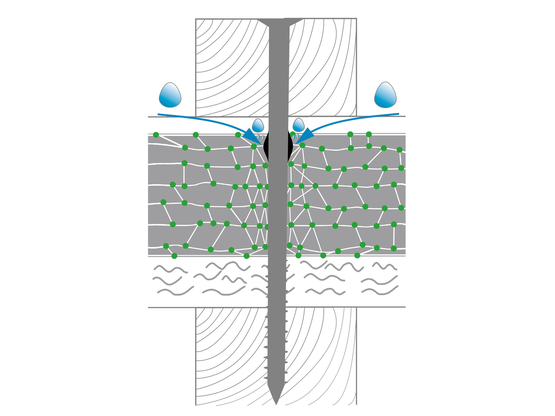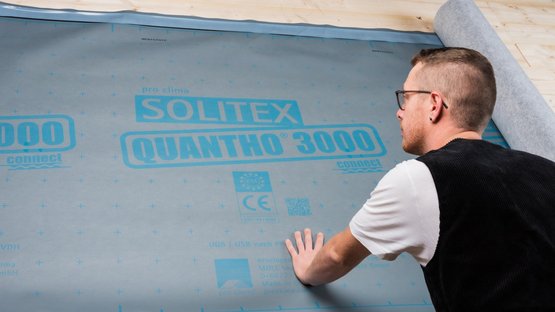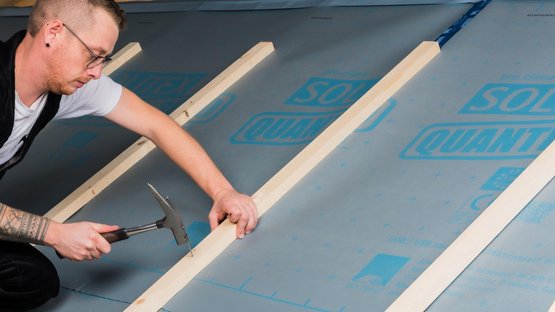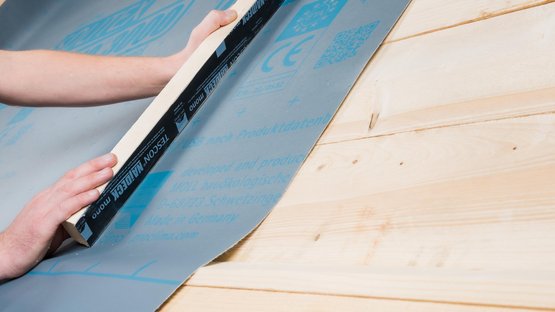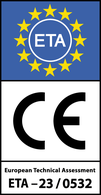Medium-weight roofing underlay with self-sealing perforations and waterproof adhesive strips
Advantages
- Maximum protection for the roof structure: excellent hail impact resistance as per ETA-23/0532 and VKF (HR 5 class)
- Reliable rainproof roofs: serves as a sub-roof underlay for roof pitches ≥10° (2.1:12) with TESCON NAIDECK as an additional sealing measure over rigid subsurfaces, as per ETA-23/0532
- Efficient installation: serves as a roofing underlay with waterproof seams and self-sealing perforations for roof pitches ≥14° (3:12) without the need for additional sealing measures, as per ETA-23/0532
- Quick waterproof adhesion: with sealing lip at the 'connect’ self-adhesive strips on the long edges of the membrane
- Flexible planning of construction schedules: at least 3 months of outdoor exposure
- Long-term protection: high resistance to ageing and heat of the functional film
- Provides protection during the construction period: suitable as a temporary covering
Areas of application
For use as a diffusion-open roofing underlay over roof sheathing, MDF and wood-fibre underlay panels, and over all thermal insulation materials, including blown-in insulation materials.
Installation instructions
General conditions
SOLITEX QUANTHO 3000 connect membranes are to be installed with the printed side facing the installation technician. The membranes are to be installed as a roofing underlay membrane horizontally (parallel to the eave) in a taut manner with no sagging.
Roofing underlay membrane
The roof pitch must be at least 14° (3:12). National regulations (e.g. minimum roof pitch for the roof covering) should be taken into account here.
Ensure that the subsurface is even when installing the membrane as a roofing underlay membrane. In the case of installation with seam and perforation protection, the general conditions included in the installation instructions and in ETA-23/0532 are to be taken into account.
When the membrane is installed as a freely hanging underlay membrane without sheathing, the rafter spacing is limited to 100 cm (3’).
When the membrane is used to create a rainproof sub-roof for roof pitches ≥10° (2.1:12), it is to be installed on even sheathing or another pressure-resistant subsurface. The SOLITEX QUANTHO 3000 connect membrane is located underneath the counter battens, and a nail-sealing tape such as TESCON NAIDECK is installed between the membrane and the counter battens in this application case.
Fasteners may not be applied in areas where water runs off in a collected manner (e.g. in roof valleys).
General
Ridge ventilation should be provided in the case of non-insulated attics that have not been converted. To do so, install the membrane in such a way that it stops 5 cm (2”) before the ridge. In addition, permanent ventilation fittings should be provided in the unconverted attic.
The membrane should be protected against the long-term impacts of UV radiation (e.g. by darkening windows).
The membrane can be used as temporary covering for up to 4 months in Central and Northern Europe, Canada and the northern United States, or 3 months in the rest of the world, to protect the building structure during the construction phase in accordance with the regulations of the Central Association of the German Roofing Trade (ZVDH).
The system products TESCON NAIDECK nail-sealing tape, ORCON F adhesive sealant and TESCON VANA are to be used for sealing of overlaps and joints.
The connect variant has two self-adhesive strips for reliable external sealing. The specifications of the applicable national regulations are to be taken into account when carrying out installation and adhesion.
Installation during hot weather
Roofing underlay membranes with top layers that serve as their functional films should be protected against excessive mechanical stresses and loading during hot weather periods. These stresses can be caused by foot traffic, storage of materials, or point loads, for example. Protective measures such as roof ladders, temporary safety battens, and protective or insulation panels have proven useful in practice in this regard. Ensure that there is sufficient grip to prevent slip hazards.
Additional instructions for blown-in insulation materials
SOLITEX QUANTHO 3000 connect can also be used as a boundary layer for blown-in insulation materials of all types. The battens must already be fitted before the blowing-in process is carried out. A protruding lath must be installed under the supporting battens in the centre of the space between the rafters so that moisture occurring under the covering is drained off centrally between the rafters. The protruding lath should be at least 1 cm (⅜”) thicker than the counter battens. This limits the bulging of the membranes during the blowing-in process and creates the necessary cross-sectional area for ventilation.
If the insulation material is blown in from the outside, the blow-in holes can subsequently be taped using TESCON VANA with a width of 15 cm (6”).
pro clima on the outside ... and it's a wrap!
Weathertightness with pro clima
Find out more about pro clima's system solutions and products for sealing your building envelope on the outside - with roofing underlay membranes, breather membranes for facades, protective membranes for timber structures during the construction phase, and a full range of sealing tapes, sealants and accessories.


